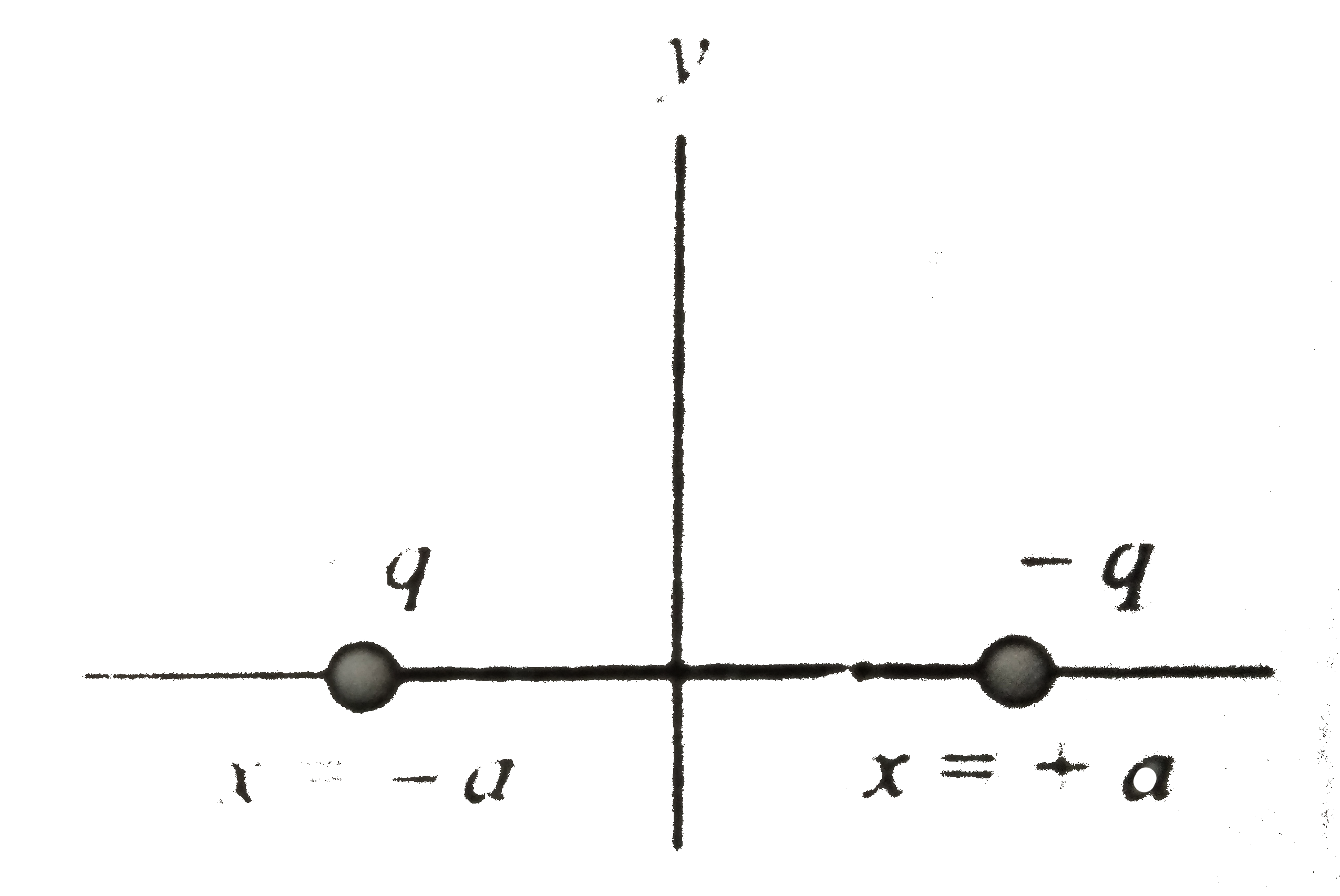Two point charges Q each are placed at (0,y) and (0,−y) A point charge q of the same polarity can move along the x-axis. Then
The forceonq is maximuma at x=±y/√2
The charge q is in equilibrium at the origin
The charge q pe~forrns an oscillatory motion about the origin
For any position of q other then origin the force is directed away from origin
Step by step video & image solution for Two point charges Q each are placed at (0,y) and (0, -y) A point charge q of the same polarity can move along the x-axis. Then by Physics experts to help you in doubts & scoring excellent marks in Class 12 exams.
Topper's Solved these Questions
- BOOK - PHYSICS GALAXY - ASHISH ARORACHAPTER - ELECTROSTATICSEXERCISE - Unsolved Numberical Problems73videos
ELECTROSTATICS
- BOOK - PHYSICS GALAXY - ASHISH ARORACHAPTER - ELECTROSTATICSEXERCISE - Numerical MCQs Single options Correct64videos
ELECTROSTATICS
- BOOK - PHYSICS GALAXY - ASHISH ARORACHAPTER - ELECTROMAGNETIC INDUCTION AND ALTERNATING CURRENTEXERCISE - Advance MCQs33videos
ELECTROMAGNETIC INDUCTION AND ALTERNATING CURRENT
- BOOK - PHYSICS GALAXY - ASHISH ARORACHAPTER - GEOMETRICAL OPTICSEXERCISE - Unsolved Numerical Problems107videos
GEOMETRICAL OPTICS
Similar Questions
Two point charge (Q each) are placed at (0,y) and (0,-y). A point charge q of the same polarity can move along X-axis. Then :
View SolutionTwo identical positive charges Q each are placed on the x axis at point (-a,0) and (a,0) A point charge of magnitude q is placed at the origin. For small displacement along x axis, the charge q executes simple harmonic motion if it is poitive and its time period is T1. if the charge q is negative, it perform oscillations when displaced along y axis. in this case the time period of small oscillations is T2. find T1T2
View Solution
Knowledge Check
- Question 1 - Select One or More
Two point charges (Q each are placed at (0,y) and (0-y) A point charge q of the sme polarity can move along the x-axis. Then
Athe force on q is maximum at x=±y/√2Bthe charge q is in equilibrium at the originCthe charge q performs an oscillatory motion about the originDfor any position of q other than origin the force is directed away from origin - Question 2 - Select One or More
Two point charges q each are fixed at (a,0) and (-a,0). A third charge Q is placed at origin. Electrons potential energy of the system will
Aincrease if Q is slightly displaced along x-axisBdecrease if Q is slightly displaced along x-axisCincrease if Q is slightly displaced along y-axisDdecrease if Q is slightly displaced along y-axis - Question 3 - Select One
Two points +ve charges q each are placed at (-a, 0) and (a,0), A third +ve charge q0 is placed at (0, y). Find the value of y for which the force at q0 is maximum.
Aa√3Ba√2CaD2a
Two point charge ±q are placed on the axis at x=−a and x=±a, as shown in fig.
(i) Plot the variation of E along the x-axis.
(ii) Plot the variation of E along the y-axis.
 View Solution
View SolutionTwo point charges of +Q each have been placed at the positions (–a/2,0,0)and(a/2,0,0). The locus of the points in YZ plane where –Q charge can be placed such the that total electrostatic potential energy of the system can become equal to zero, is represented by which of the following equations ?
View SolutionTwo equal negative charges −q are fixed at points (0,−a) and (0,a) on y-axis. A poistive charge Q is released from rest at point (2a,0) on the x-axis. The charge Q will
View SolutionTwo equal negative charges are fixed at points and on y-axis. A positive charge Q is released from rest at the point on the x-axis. The charge Q will:
View SolutionConsider two positive point charges, each of magnitude q, placed on the y-axis at the points (0, a) and (0, -a). A positively charged particle of charge q' and mass m is displaced slightly from the origin in the direction of the positive x-axis.
At the origin, charge q' will be inView Solution

